Beyond Reykjavík: Iceland tours and activities
During your stay, different Iceland tours are available to all destinations in the country, for all kinds of activities, and almost all price levels. (Well, it's still Iceland, so don't rely solely on bargains.) If spending some time in Reykjavík, the capital, is worthwhile, venturing out of it is truly indispensable.
You may want to rotate your phone in order to improve your browsing experience on this site.
Looking for unique wall art?
If you like pictures on this page, be sure to visit the online shop and browse prints of Iceland landscapes available there.
Ask for a quote on your favourites, made to order with exact dimensions and your choice of frame!
The following information was revised and updated in August 2018. Please note that schedules and prices are subject to change and might be not up to date at the time of your reading.
Quick links
How to organise your Iceland tours
Organising your holiday in Iceland wouldn't be different from any other destination and might actually work out much simpler. Depending on your preferences, you could
- join an organised tour from your home country. If you are from Europe, this should be readily available with many providers.
- book your tour or excursions with one of the numerous Icelandic tour operators online. Keep in mind that you'd probably need to pay the whole price in advance at the moment of booking.
- book on location when in Iceland. If you are going to explore the country on day tours while based in Reykjavík, you might opt for only booking your accommodation before arrival – this is strongly recommended, especially in summer – and arrange your activities on a day-to-day basis.
To help you plan your itinerary, the following is a short presentation of regions, their main sights and hidden spots.
The Southwest
The folks landing at the international airport in Keflavík will have had a glimpse of the place on their way to the capital. The nature of the region can be summarised in one word – lava. Several attractions deal with it in one way or another.
The Blue Lagoon close to Grindavík has indeed become for many the epitomisation of what Iceland is about. Too many, if you ask me. The lake came into existence due to an accident at the nearby power station resulting in a thermal water spill. Minerals suspended in the water provide for its milky appearance and form the basis for numerous skin-care products.
There are several packages to choose from for a visit, some including spa treatment. The tickets have to be purchased in advance. Many operators in Reykjavík offer tours of various length, sometimes in combination with other attractions. It is also possible to visit the place on your way to the international airport for an afternoon flight. If you don't want to join an organised tour, your venue ticket entitles you to free bus transfers between the capital and the lagoon. Buses depart from Reykjavík hourly on the hour.
Well worth visiting is the dormant volcano Þríhnúkagígur 20 km (13 mi) away from Reykjavík. There you can descend on an open elevator platform into the colourful magma chamber 120 m (400 ft) below the surface. The sight is quite spectacular and pretty much unique – highly recommended. Organised tours are available from mid-May through September. The tour takes 5-6 hours, including transfers from and to your accommodation in the capital, a 3 km (2 mi) walk between the parking lot and the location, and a light lunch. The actual time spent inside the volcano is 35-40 minutes.
The West
West Iceland is full of history and stories. The Settlement Centre in Borgarnes provides insightful information on both historical events and those of Egil's Saga which took place in the vicinity. The saga dates back to the 13th century and covers a long period of time between 850 and around 1000 AD. The museum is open daily from 10 am to 9 pm, admission is 2,500 ISK, with discounts for senior citizens, students and children under 15.
Snæfellsjökull, 1446 m (4,744 ft) high, dominates the peninsula named after it. The prominent volcano is sometimes visible from Reykjavík 120 km (75 mi) away. Its iconic summit is permanently covered by ice. The first historically documented ascend occurred in 1753. One of the craters featured as the entrance to the subterranean world in Jule Verne's novel A Journey to the Centre of the Earth from 1864.
The area around the volcano is a designated National Park. The peninsula is often called "Iceland in Miniature" referring to country's "typical" features of sea, mountains, lava and ice stacked in one place. This is a great destination for a day tour from Reykjavík.
Stykkishólmur on the northern coast of Snæfellsnes is the starting point for the car ferry Baldur to the West Fjords.
The West Fjords
Shaped like a giant claw grasping at the sea, the West Fjords region is arguably the most exotic destination in Iceland, and definitely the least visited one. Two routes leading from the ring road in its direction wind around countless fjords making the driving rather exhaustive. Boarding a ferry to Brjánslækur from Stykkishólmur on Snæfellsnes could offer a welcoming break for tired drivers.
Otherwise, Ísafjörður, the main town in the region, is reached from Reykjavík after a 40-minute flight on Air Iceland at least twice daily. The landing at the local airport is quite spectacular.
The flights are used for day excursions from the capital in summer. During the winter season, Guesthouse Heydalur off route 61 in the northern part of the area organises 5-day getaways with full board and transfers from and to Reykjavík.
To actually get to know the region, your visit will require at least 2 weeks. There is a lot to see and do. Látrabjarg marks the western end of Europe with high cliffs occupied by puffins and other sea birds in summer. Nearby sandy beaches of Rauðasandur are deliriously coloured in pink-orange. Mountains around Ísafjörður offer enough opportunities to ambitious hikers. And then there is Hornstrandir –
The northernmost "finger" on the map is an eerie place abandoned by its inhabitants in the 50s. Ghost villages with empty houses are now overgrown with giant plants. However, it is possible to get there by ferry, stay for some serious trekking in total wilderness, and be picked up for return at an agreed place. It is almost sure you'll meet some Arctic foxes along the way.
The North
The northern coast of Iceland is a long succession of peninsulas protruding from the mainland like knuckles from a clenched fist. From Vatnsnes in the west to Langanes in the east, this is a paradise for birders, whale-watchers, anglers, hikers, horse-riders, and what not. Besides, the north has the most stable weather pattern in the country, or so they say.
The region boasts many historic sites. The turf church of Víðimýri and the turf farm in Glaumbær are beautiful examples of traditional Icelandic architecture. A similar museum in Laufás on the eastern shore of Eyjafjörður near Grenivík gets far less visitor attention in comparison – undeservedly.
Natural attractions abound as well. The Mývatn area is easily the most cramped place in the north, getting daily loads of both fly-in tourists from Reykjavík and cruise ship passengers from Akureyri. The shallow lake itself isn't much to write home about. However, the surrounding natural features are well worth bearing with the crowds:
- Pseudocraters of Skútustaðagígar are fascinating witnesses to ancient volcanic eruptions.
- Formed by the same events, lava fields of Dimmuborgir – literally meaning "dark cities" or "castles" – seem to have escaped from the pages describing Mordor in The Lord of the Rings.
- The Grjótagjá cave filled with geothermal water was actually used for bathing until well into the 80s. The place featured in the 3rd season of Game of Thrones.
- The geothermal area of Námaskarð allows for an up-close look – and a sniff – of the modern-day volcanism.
- Sustained by the same volcanic system of Krafla, Mývatn Nature Baths, aka the Green Lagoon, is in many ways similar to its blue namesake from across the country, bar far less visitors and much cheaper admission. No reservation is required either. The location is open daily from 9 am until midnight in summer, and noon to 10 pm during off-season. This is warmly recommended!
- The Laxá river originating in Mývatn offers some excellent angling along its entire course. For those who can afford rather steeply priced licenses, package tours are available with full-board or self-catering lodge accommodation.
The Jökulsárgljúfur National Park, separated from the ring road by couple of dozens miles of unpaved track, looks in comparison to Mývatn just about deserted. The Jökulsá á Fjöllum river descends here over several striking waterfalls, most notably Selfoss, Dettifoss, and Hafragilsfoss. It meanders further around bizarre Hljóðaklettar lava formations, then continues to the horseshoe-shaped Ásbyrgi gorge adorned by authentic birch and willow woodland before discharging into the Greenland Sea. The entire area is crossed by countless hiking trails of different lengths and difficulty levels.
Speaking of hiking and other activities: The mountain range on the Tröllaskagi peninsula offers excellent walks. Whale-watching tours are possible from Dalvík, Hauganes, Akureyri and Húsavík. Grímsey sports the northernmost point of Iceland and is the only place in the country where you can cross the Arctic circle.
The biggest town outside of Greater Reykjavík, Akureyri has population of 18,000 and is the true capital of the north. The local airport is connected with Reykjavík by several daily flights and also linked to Keflavík for international connections.
In search of a perfect gift?
Consider Arctic Arc, a luxury photo book with 48 original panoramic photographs from Iceland and Greenland, seamlessly printed edge to edge over the fold!
The East
For the most part, east Iceland is too far from Reykjavík to become a mass tourist destination. True, there are day tours using the airport in Egilsstaðir for shuttle flights. Also, the weekly car ferry from Denmark ends in Seyðisfjörður. Still, the east stays a blank area on the most Iceland visitors' maps. It's a shame.
The only site getting its fair share of tourist attention is hands down the glacier lagoon Jökulsárlón, though this probably even isn't politically correct anymore – the region belongs officially to South Iceland nowadays. Anyway, this is how far east tour buses from Reykjavík can make it in one long summer day. The scenery is, however, breathtaking, and if you hear someone speaking of "filmic", this is true, too. The location has been a setting for 2 James Bond movies, a Batman, and a Lara Croft to boot.
The centre of East Iceland, Egilsstaðir, was founded during World War II. The town is close to the Lagarfljót lake said to house an evil giant worm akin to the Loch Ness monster.
Moving to the coast, mountains surrounding Borgarfjörður eystri are a hiker's paradise. The city referred to in the fjord's name is Álfaborg, a group of cliffs above its shores reported to be elves' dwellings, including those of the Elf Queen. Víknaslóðir combine multiple marked trails into a 10-day trekking tour through this magnificent landscape.
Djúpivogur at the southern end of the "official" east is Iceland's first and only Cittaslow member. The town aims to improve the life quality for its citizens. It is an old town by country's standards. Hanse merchants obtained licenses to trade here as early as 1589. Langabúð right above the town harbour is one of the oldest houses in Iceland, dating back to 1790. Today it accommodates several museums, an exhibition hall and a charming café – the soup of the day and the giant chocolate cake are recommended. Further along the shore, Eggin í Gleðivík is an amusing outdoor installation by sculptor Sigurður Guðmundsson comprising stone replicas of 34 local birds' eggs.
The South
The southern coast of Iceland is one of the most popular destinations for day tours out of Reykjavík. The attractions are plentiful and easily accessible by bus. The sites visited on such a tour might include a greenhouse in Hveragerði, the striking waterfalls of Seljalandsfoss and Skógafoss, black sandy beaches of the Atlantic seashore, and perhaps venture out into the Þórsmörk valley, onto a glacier of Sólheimajökull, or even as far as Skaftafell with its black waterfall, Svartifoss.
Harbours of Landeyjarhöfn and Þorlákshöfn are starting points for passenger ferries to the Westman Islands. The archipelago is a showcase of volcanic landscape and dramatic events related to it. Surtsey has become the latest addition to the state territory of Iceland when it surfaced on November 14, 1963 during an underwater volcanic eruption. Since then, the island has been constantly diminishing in size, now measuring just over 1 km² (0.5 sq mi).
The islands made headlines again when Heimaey, the only inhabited island, was completely evacuated during the night of January 23, 1973 following the eruption of Eldfell. Both events are on exhibition at Eldheimar, the new volcanic museum in Heimaey. Boat tours around the islands are available in summer.
Last but actually foremost, the Big Three of Icelandic sights are also situated in the south, on the outskirts of Highlands. The rule is, every visitor to the country gets to see them, on every visit. I have to say, it's well worth it, every time.
Marketed together as the Golden Circle, they form rather a straight line on the map. These are the most touristy places outside of Reykjavík and yet the most Icelandic of all.
Þingvellir, the site of historical folk meetings from 930 AD until 1798, is where the heart of the nation beats. Declared National Park in 1930, this is "the sacred site of all Icelanders". This is also a place where the continental rift comes to the surface and pays witness to both Earth's past and future at the same time. For something completely different, diving and snorkelling in the fissure of Silfra have been described as out of this world experience.
Natural wonders of Gullfoss and Geysir have long become the most recognisable symbols of Iceland. They might feel overrun at times, but their grandeur and beauty are undeniable.
Golden Circle tours are available all year round from all agents in the capital.
The Highlands
If you noticed, we've just completed a virtual tour around Iceland. What's left is its mountainous interior, the uninhabited Highlands with their barren beauty and tales of storms and outlaws.
The vast area almost impenetrable in days of yore, has become accessible with the arrival of 4WD. Historical overland routes, Kaldidalur, Kjölur and Sprengisandur, and many roads branching off from them have been attracting explorers and adventurers ever since. The best way to start your own exploration is by far on foot. Below is a very subjective and incomplete listing of hiking areas, trails and treks, in no particular order:
- Kerlingarfjöll. A small mountain range adjacent to the Hofsjökull glacier with summits over 1400 m (4,800 ft) and a geothermal area within. You can tour around the range in 3 days, or opt for day hikes out of the base camp. Bring your own tent or stay in one of the huts. The latter are available along the trekking route, too. Kerlingarfjöll is readily accessible in summer on daily highland buses.
- Kjalvegur. An outstanding trekking route of some 180 km (115 mi) in length beneath the Langjökull glacier along an old horse-track. The tour starts north of Gullfoss and runs in parallel to the Kjölur road towards Blöndudalur. Chances are, you'll be travelling alone for most of the time. Come prepared.
- Landmannalaugar. A gem in the crown of Highlands, the area's name literally means "hot springs of people from land". Water flows here between colourful mountains formed from rhyolite, a volcanic rock. Countless hiking trails cross the place and many more lead out of it to other highland destinations. All tour bus operators in Reykjavík offer numerous daily services to and from the location in summer. The only mountain hut is fully booked for months in advance by organised groups. There is a camping ground with public showers. A hot spring with changing facilities is a short walk away. For some privacy, you may opt to stay at Landmannahellir 10 km (6 mi) away.
- Þórsmörk. "Thor's forest" beneath the infamous Eyjafjallajökull is part of the Krossá river valley. Framed by glaciers on three sides and abounding in water, the valley enjoys a sunny microclimate and rich vegetation. Another true hiking heaven, the area is connected to the highland bus network with many daily departures in summer. Several mountain huts, a camping ground and a shop cater to numerous visitors during the season. Jeep tours into the area are on offer all year.
- Laugavegur. The trekking route of Iceland, its most popular trail with many, like, really many, folks on the move. The 55 km (35 mi) long hike runs from Landmannalaugar to Þórsmörk in 4 day stages. In season, mountain huts along the way are in high demand and often fully booked well in advance. If not on an organised tour, you'd probably be better off carrying your own tent. Walking in June or September may help avoiding the crowds.
- Fimmvörðuháls. From Þórsmörk it is possible to continue further south to Skógar on the ring road over 26 km (16 mi) in 2 days. The last stage of the tour follows the Skógá river from the pass at 1100 m (3600 ft) along several rarely seen waterfalls.
- Lónsöræfi. A demanding 5-day trek over 70 km (45 mi) from Snæfell to Stafafell on the ring road. Going in the opposite direction is also possible but more challenging. Overnight accommodation is available in mountain huts along the route. Time permitting, you can start or finish your tour by climbing the 1833 m (6000 ft) high extinct volcano.
- Öskjuvegur. Another 5-day tour for a fit group, the hike leads from Herðubreið, "the Queen of Icelandic mountains", over the lava field Ódáðahraun and Askja to the Barðardalur valley south-west of Mývatn. The trek with accommodation in mountain huts is 95 km (60 mi) long.
- Eldgjá. The literal "fire gorge" might have huge dimensions and exist since over 1000 years – it was only discovered in 1893. The 8km (5mi) long canyon was formed by a huge volcanic eruption. From a highland bus stop at its entrance, you can walk all the way up to the magnificent Ófærufoss waterfall. Several hikes are possible in the vicinity. In addition, a trekking route from the hardly accessible Sveinstindur hut runs nearby on to Strútstígur and Laugavegur. You can join it here to reach the Hvanngil hut on Laugavegur in 3 day stages. From there, another 2 days' walking will bring you to either Landmannalaugar or Þórsmörk.
A word of caution
For the above hiking tours, I strongly recommend joining an organised group, especially if you don't have much trekking experience. Though the heights you'll be dealing with in Iceland are much lower than in other mountain regions, the harsh terrain and the unpredictable weather could pose a definite challenge to your well-being. Don't put it at risk unnecessarily.
A word on conduct
The human presence in the Highlands is a threat to their fragile nature. Please try not to harm it. Particularly, restrain from driving off designated roads. Tire marks can scar the landscape for years. Besides, it is against the law and subject to rather painful fines.
Tags: #discovericeland #beyondreykjavik #coolplaces
Useful links for Iceland tours
Here are some Iceland tour providers operating out of Reykjavík. The list is far from being complete, and the usual disclaimer applies.
- Extreme Iceland
- Tour operator and travel agency. As far as I know, they are the only ones offering visits to ice caves below Vatnajökull during winter (November to March).
- Gray Line Iceland
- Scheduled bus services and day tours, bus passports, Airport Express to/from Keflavík.
- Iceland Rovers
- Day tours and longer packages in modified jeeps for the active-minded.
- Icelandic Mountain Guides
- Organised hiking and trekking tours of several days' length for all difficulty levels in Iceland and Greenland. Join them on the month-long traverse of the country from north to south once every season.
- Inside the Volcano
- Descend into the magma chamber of a dormant volcano on the outskirts of Reykjavík.
- Reykjavík Excursions
- Scheduled bus services and day tours, bus passports, Flybus to/from Keflavík airport.
- Strætó
- Scheduled bus services around Iceland, public transportation in Reykjavík.
- Trex
- Scheduled buses into the interior, day tours, several hiking options, and bus charter.
- Útivist
- Travel association maintaining several mountain huts and offering hiking and trekking tours of various length. Non-members are welcome to participate, too. The name means "outdoors" in Icelandic.
Other articles about Iceland
- Of ice and fire
- An introduction to Iceland, one of my favourite photography destinations.
- Reykjavík 101
- Your guide to the great small city Iceland calls its capital.
|
Tell me what you think!
Is it useful 👍? Awful 👎? Leave a message! Your comments help make this site better (and give me a kick—one way or another).
Popular articles
-
A kind of magic
If a digital picture has to be seen in the real world, printed on a real medium and displayed in a real showcase, its transition from RAW to real is better done in an old school image editor. Enter A…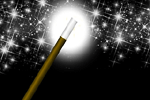
-
A duck for a dog
If you got your own place on the Internet, helping your visitors find what they are looking for is a great way to engage them and keep them staying a bit longer. A custom site search can achieve just …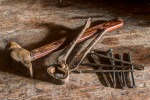
-
"Might as well have the best"
Aiming for better images? Think better lenses! This is your most important piece of gear, so you better get it sorted out. — Need some advice?
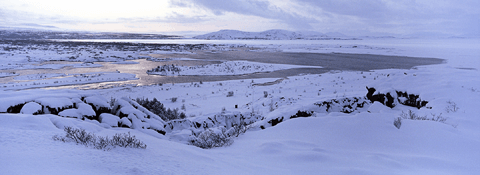
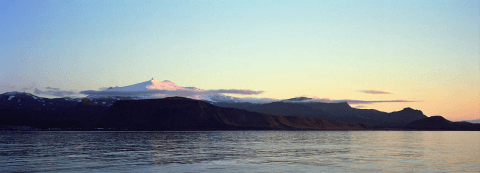
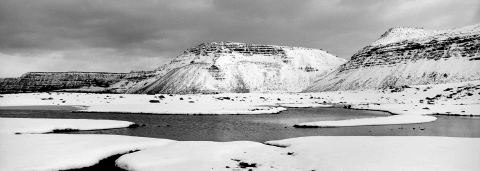
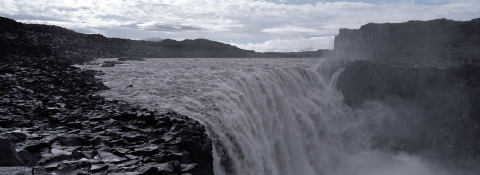
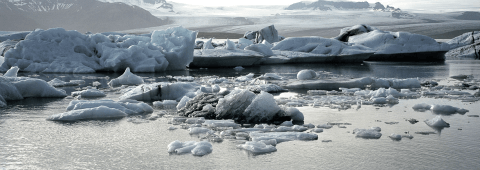
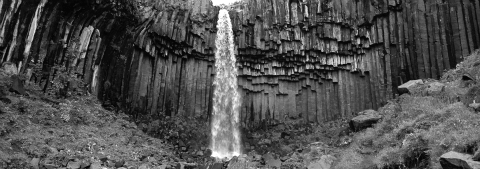
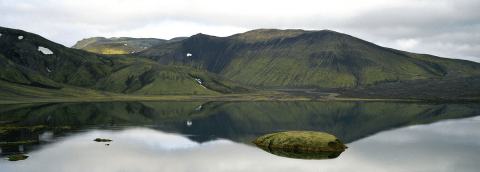
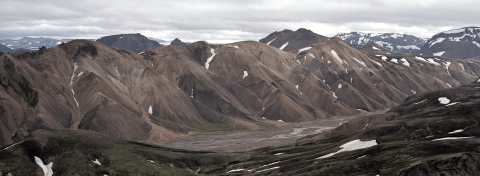
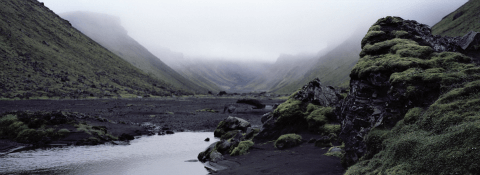
 Become a patron for
Become a patron for